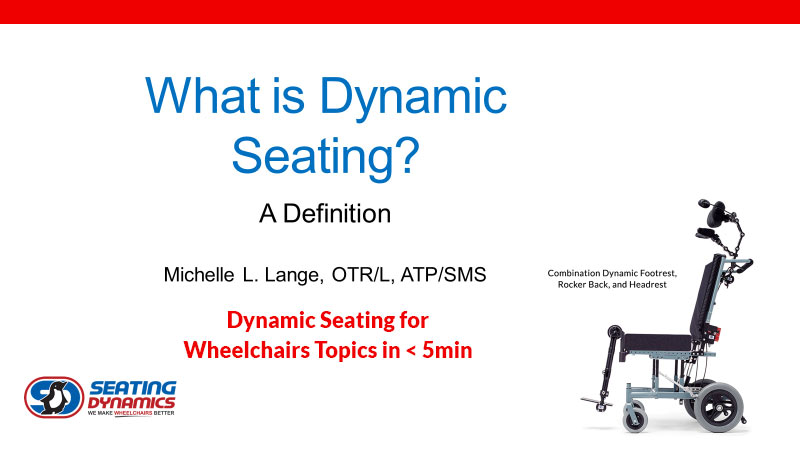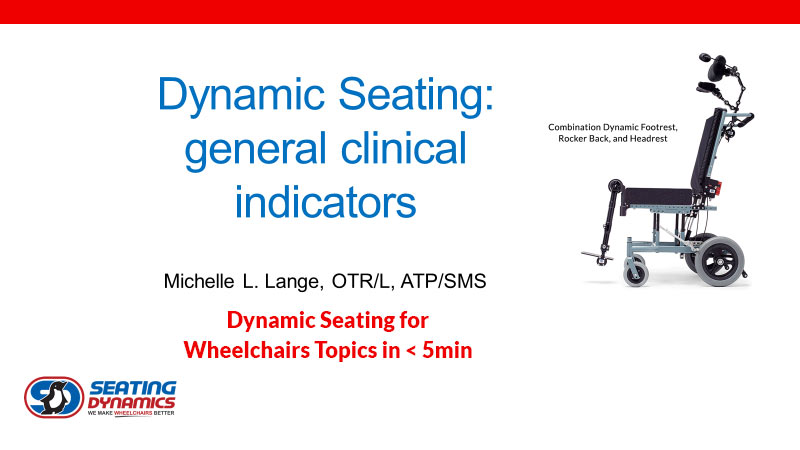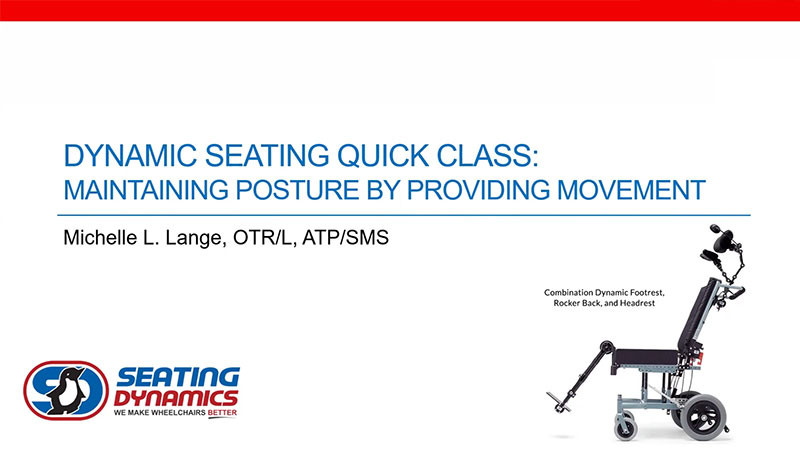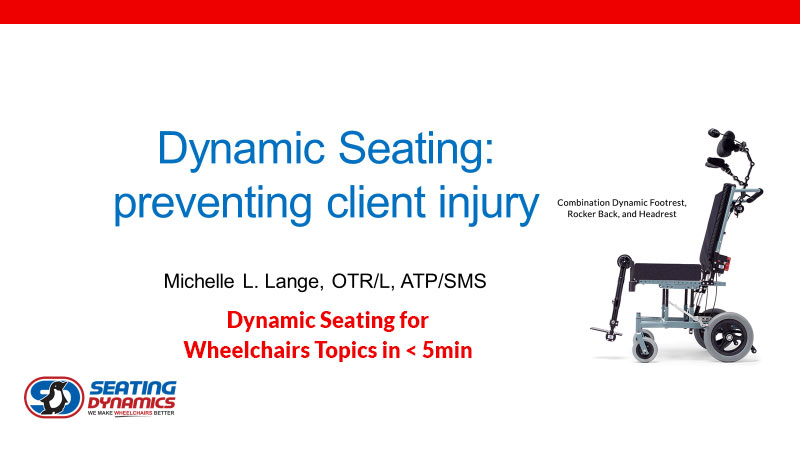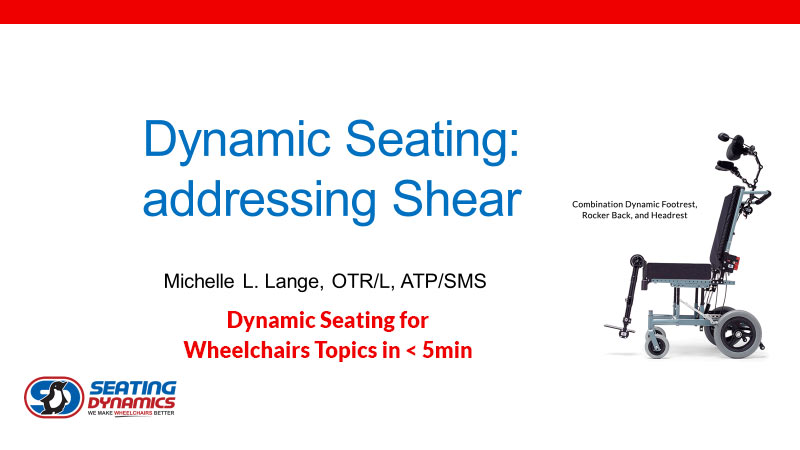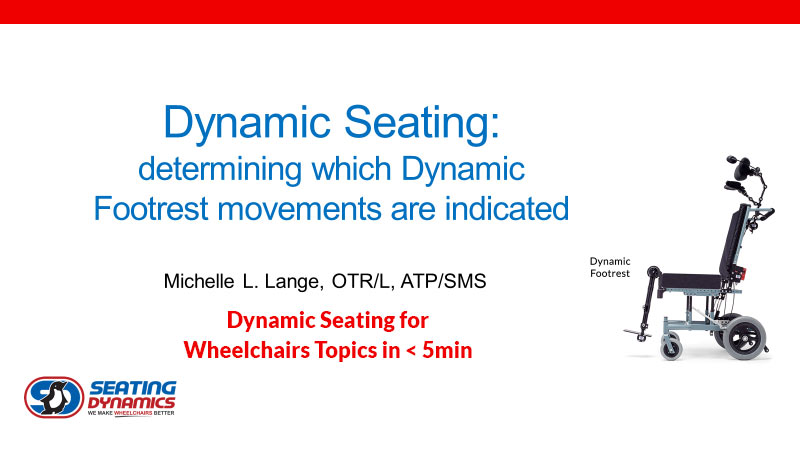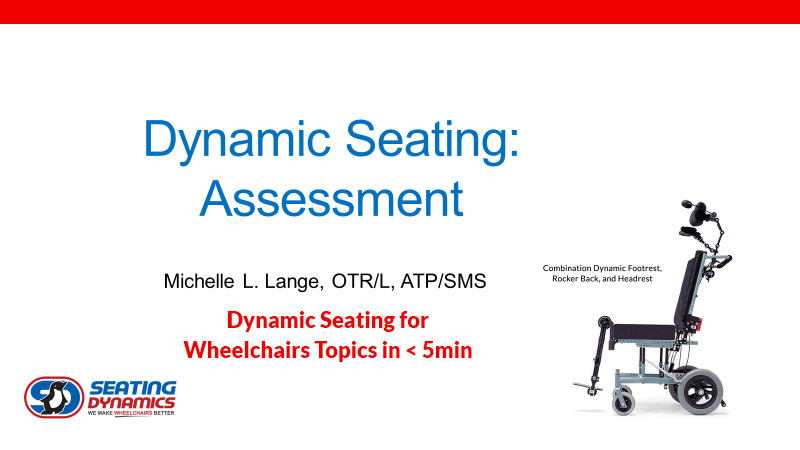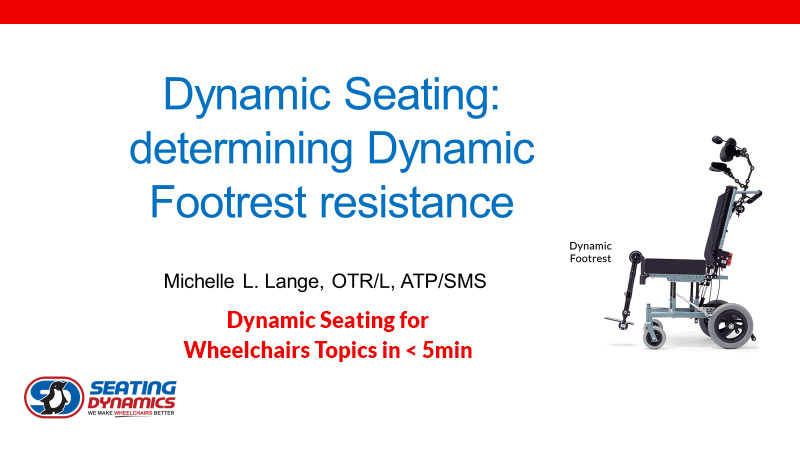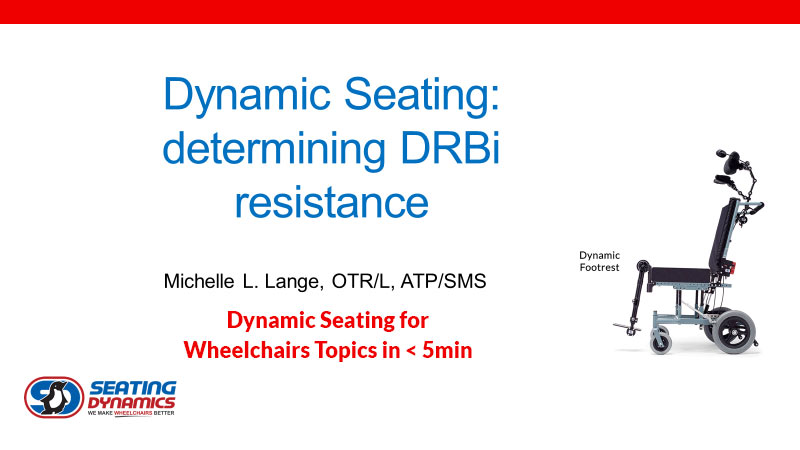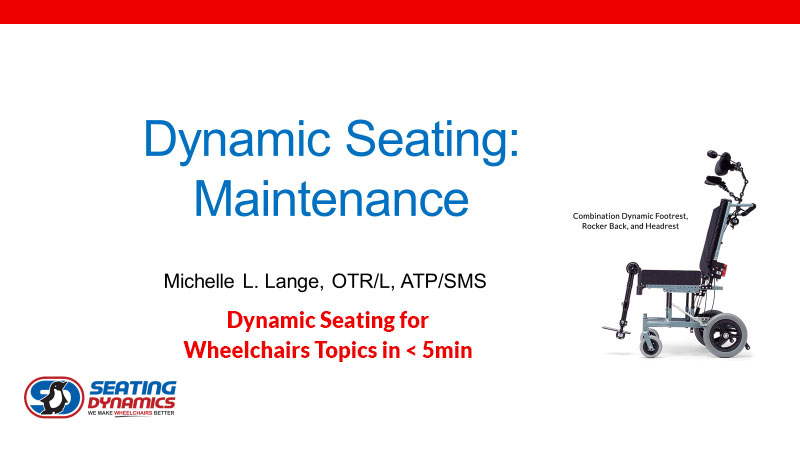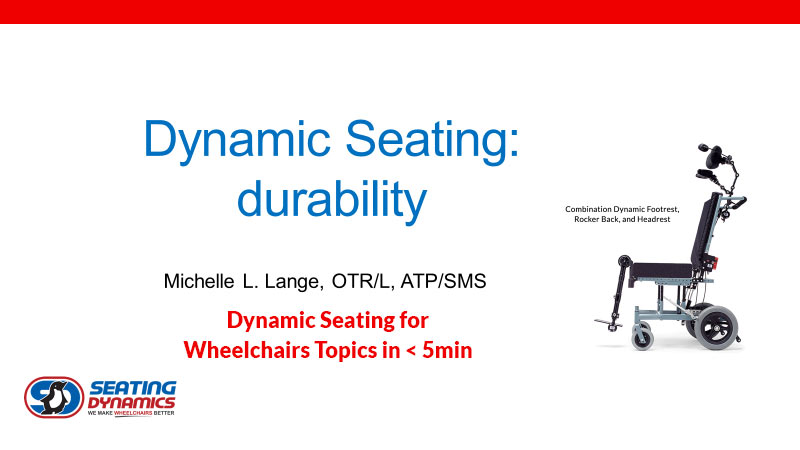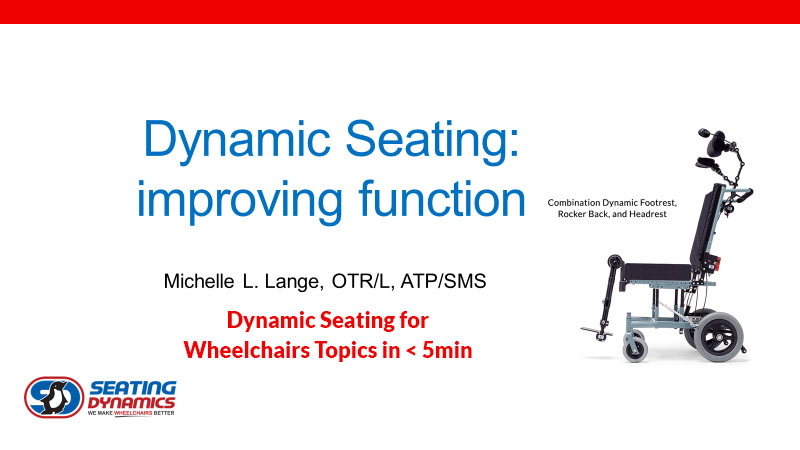Quick Class: What is Dynamic Seating?
Definitions and terminology may not seem very exciting but are very important. It is critical that we each know exactly what assistive technology or intervention is being recommended or used. In this video, Michelle Lange presents a definition and explains What is Dynamic Seating?
Quick Class: Dynamic Seating – General Clinical Indicators
Dynamic seating has many potential applications. Dynamic components absorb and diffuse force, protecting the wheelchair user from injury caused by sustained and/or repeated forces and reducing damage to the seating system and wheelchair.
Quick Class: Maintaining Posture in a Wheelchair by Providing Movement with Dynamic Seating
Explore why clients lose their posture in a wheelchair & how Dynamic Seating can help.
Quick Class: Dynamic Seating – Preventing Client Injury
Dynamic Seating can assist with preventing client injury for those who exert sustained or intermittent force against seating components. These forces can lead to pain, joint and bone injuries, and possibly even concussions. Dynamic Seating absorbs forces, preventing these injuries.
Quick Class: Dynamic Seating – Addressing Shear
A primary goal of wheelchair seating and mobility is to reduce Shear forces. Does Dynamic Seating increase Shear? This quick class answers that question.
Quick Class: Dynamic Seating – Determining Which Dynamic Footrest Movements are Indicated
Dynamic Footrests provide movement in 3 directions: telescoping downward, knee extension, and ankle plantar flexion. This Quick Class discusses how to determine which movement to select for an individual client.
Quick Class: Dynamic Seating – Assessment
It is not typically realistic to trial Dynamic Seating components as the frame may need to be modified. Instead, we can simulate the effects of Dynamic Seating during the assessment to determine if these components are indicated.
Quick Class: Dynamic Seating – Footrest Resistance
The optimal level of resistance is critical to the functioning of Dynamic Footrests. In this Quick Class, we will review how to determine resistance at the telescoping and elevating features.
Quick Class: Dynamic Seating – Resistance DRBI Back
The optimal level of resistance is critical to the functioning of a Dynamic Back. In this Quick Class, we will review how to determine if the resistance is too firm, too soft, or just right.
Quick Class: Dynamic Seating – Maintenance
Most items need a certain level of maintenance. What about Dynamic Seating components? The answer is, “Yes!” All that force and movement will, eventually, wear down the elastomers. Depending on the degree of force and frequency of movement, the elastomers may have to be changed more frequently for some clients than for others.
Quick Class: Dynamic Seating – Durability
Dynamic Seating is often used to prevent equipment breakage, specifically the wheelchair frame and seating system. The Dynamic components absorb strong, repeated, sudden, and/or sustained forces, hence protecting vulnerable areas of the seating and mobility base. But what about the Dynamic Components themselves? Just how durable are these?
Quick Class: Dynamic Seating – Improving Function
Dynamic Seating can improve function, including medical functioning. This Quick Class reviews specifics supported by research.

